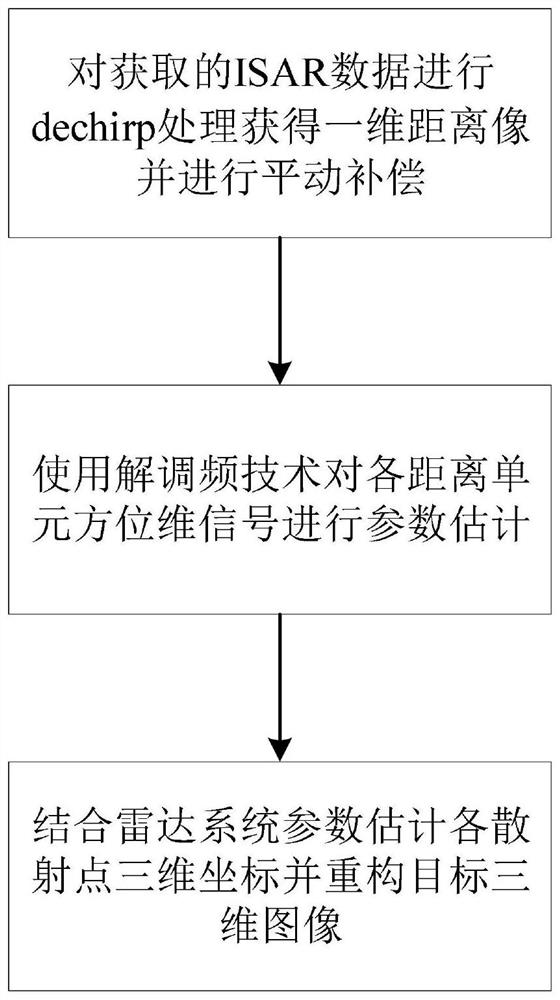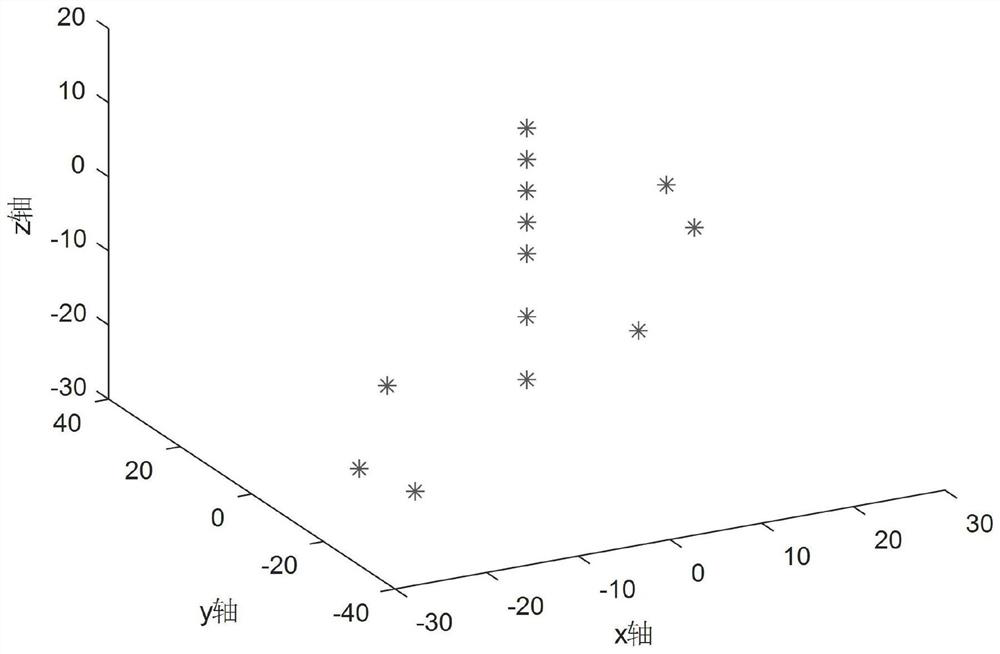Three-dimensional imaging method for uniform-speed moving target by uniformly-accelerated-motion double-base ship-borne ISAR (inverse synthetic aperture radar) under low sea condition
A technology of uniform motion and three-dimensional imaging, applied in the field of radar, can solve problems such as inability to complete three-dimensional imaging, and achieve the effects of strong anti-interference ability, good safety performance and long observation distance
- Summary
- Abstract
- Description
- Claims
- Application Information
AI Technical Summary
Problems solved by technology
Method used
Image
Examples
specific Embodiment approach 1
[0021] Specific implementation mode 1: The specific process of a method for 3D imaging of a uniformly moving target by a dual-base shipborne ISAR with uniform acceleration under low sea conditions in this embodiment is as follows:
[0022] Step 1: Obtain the echo signal of the uniformly accelerating dual-base shipborne ISAR to the uniformly moving target under low sea conditions, perform pulse compression on the echo signal to obtain a one-dimensional range image, and perform translation compensation on the one-dimensional range image to obtain translation The compensated one-dimensional distance image;
[0023] There is no three-dimensional swing caused by ocean waves in the ship under low sea conditions, and there is three-dimensional swing caused by ocean waves in the ship under high sea conditions;
[0024] Step 2, using the demodulation frequency method to perform parameter estimation on the azimuth dimension signal of each range unit of the one-dimensional range image af...
specific Embodiment approach 2
[0028] Embodiment 2: The difference between this embodiment and Embodiment 1 is that in step 1, the echo signal of the uniform-acceleration dual-base shipborne ISAR to the target moving at a uniform speed under low sea conditions is obtained, and the echo signal is pulsed. The one-dimensional range image is obtained by compression, and translation compensation is performed on the one-dimensional range image to obtain the one-dimensional range image after translation compensation; the specific process is as follows:
[0029] The linear frequency modulation (LFM) signal transmitted by the ISAR is expressed as:
[0030]
[0031] in is a rectangular function, T p is the pulse width, is fast time, t m is to satisfy t m =Slow time of mT, m is the mth transmitted pulse signal, m=1,2,...,M, M is the total number of transmitted pulse signals, T is the pulse repetition period; t is the full time; f 0 is the carrier frequency of the transmitted signal, the frequency modulat...
specific Embodiment approach 3
[0037] Embodiment 3: The difference between this embodiment and Embodiment 1 or 2 is that the echo signal is subjected to pulse compression to obtain a one-dimensional range image, and translation compensation is performed on the one-dimensional range image to obtain a translation-compensated one-dimensional range image. Dimensional distance image; the specific process is:
[0038] The steps of pulse compression Dechirp processing are:
[0039] Firstly, a linear frequency modulation (LFM) signal with the same parameters as the transmitted linear frequency modulation (LFM) signal with a fixed delay time is used as the reference signal, and the reference signal and the target echo are subjected to frequency difference processing. The one-dimensional distance image can be obtained by Fourier transform (FFT) in the fast time of , and the mathematical expression of the one-dimensional distance image is as follows:
[0040]
[0041] where υ is the distance unit sequence, R pΔ =...
PUM
 Login to View More
Login to View More Abstract
Description
Claims
Application Information
 Login to View More
Login to View More - R&D
- Intellectual Property
- Life Sciences
- Materials
- Tech Scout
- Unparalleled Data Quality
- Higher Quality Content
- 60% Fewer Hallucinations
Browse by: Latest US Patents, China's latest patents, Technical Efficacy Thesaurus, Application Domain, Technology Topic, Popular Technical Reports.
© 2025 PatSnap. All rights reserved.Legal|Privacy policy|Modern Slavery Act Transparency Statement|Sitemap|About US| Contact US: help@patsnap.com



